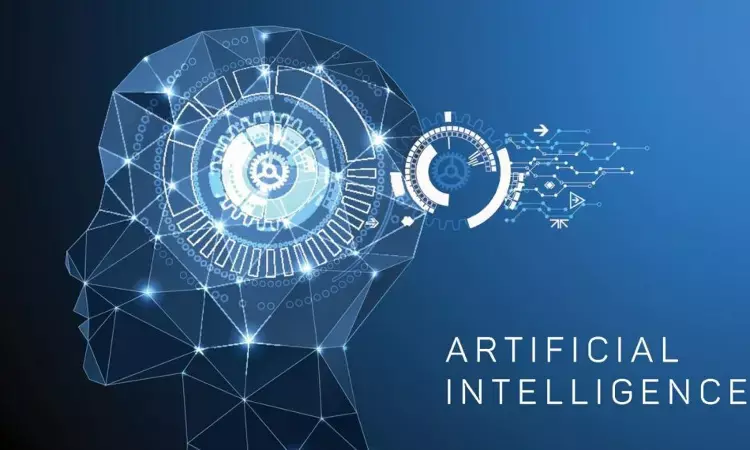- Home
- Medical news & Guidelines
- Anesthesiology
- Cardiology and CTVS
- Critical Care
- Dentistry
- Dermatology
- Diabetes and Endocrinology
- ENT
- Gastroenterology
- Medicine
- Nephrology
- Neurology
- Obstretics-Gynaecology
- Oncology
- Ophthalmology
- Orthopaedics
- Pediatrics-Neonatology
- Psychiatry
- Pulmonology
- Radiology
- Surgery
- Urology
- Laboratory Medicine
- Diet
- Nursing
- Paramedical
- Physiotherapy
- Health news
- Fact Check
- Bone Health Fact Check
- Brain Health Fact Check
- Cancer Related Fact Check
- Child Care Fact Check
- Dental and oral health fact check
- Diabetes and metabolic health fact check
- Diet and Nutrition Fact Check
- Eye and ENT Care Fact Check
- Fitness fact check
- Gut health fact check
- Heart health fact check
- Kidney health fact check
- Medical education fact check
- Men's health fact check
- Respiratory fact check
- Skin and hair care fact check
- Vaccine and Immunization fact check
- Women's health fact check
- AYUSH
- State News
- Andaman and Nicobar Islands
- Andhra Pradesh
- Arunachal Pradesh
- Assam
- Bihar
- Chandigarh
- Chattisgarh
- Dadra and Nagar Haveli
- Daman and Diu
- Delhi
- Goa
- Gujarat
- Haryana
- Himachal Pradesh
- Jammu & Kashmir
- Jharkhand
- Karnataka
- Kerala
- Ladakh
- Lakshadweep
- Madhya Pradesh
- Maharashtra
- Manipur
- Meghalaya
- Mizoram
- Nagaland
- Odisha
- Puducherry
- Punjab
- Rajasthan
- Sikkim
- Tamil Nadu
- Telangana
- Tripura
- Uttar Pradesh
- Uttrakhand
- West Bengal
- Medical Education
- Industry
Artificial intelligence may improve detection of fractures by X rays in trauma patients

France: The use of artificial intelligence (AI) software is helpful for radiologists to deliver better performance in detecting bone fractures on x-rays in trauma patients, says a recent study published in Diagnostic and Interventional Imaging.
The study found that AI-assisted radiologists work faster and better than unassisted radiologists. AI could be of great help to radiologists in daily trauma emergencies and could decrease the cost of missed fractures.
The study was conducted by Lisa Canoni-Meynet, Department of Radiology, CHU de Besancon, Besançon, France, and colleagues with the objective to compare the performance of radiologists with and without AI assistance for detecting bone fractures from trauma emergencies.
For this purpose, the researchers retrospectively included five hundred consecutive patients (232 women, 268 men) with a mean age of 37 years. Three radiologists independently interpreted radiographs without then with AI assistance after a 1-month minimum washout period. Consensus reading between musculoskeletal radiologists and AI results was used to determine the ground truth.
A comparison was made between patient-wise sensitivity, specificity, positive predictive value (PPV), and negative predictive value (NPV) for fracture detection and reading time of unassisted and AI-assisted readings of radiologists. Their performances were also assessed by receiver operating characteristic (ROC) curves.
The findings of the study were as follows:
- AI improved the patient-wise sensitivity of radiologists for fracture detection by 20% and their specificity by 0.6%.
- It increased the PPV by 2.9% and the NPV by 10%.
- Thanks to AI, the area under the ROC curve for fracture detection of readers increased respectively by 10.6%, 10.2%, and 9.9%.
- Their mean reading time per patient decreased by respectively 10, 16, and 12 s.
"Our findings confirm that AI significantly increases radiologists' overall performance and productivity in fracture diagnosis in a representative sample of daily activity in a trauma emergency department," the researchers wrote in their study.
Reference:
Canoni-Meynet L, Verdot P, Danner A, Calame P, Aubry S. Added value of an artificial intelligence solution for fracture detection in the radiologist's daily trauma emergencies workflow. Diagn Interv Imaging. 2022 Jun 29:S2211-5684(22)00115-2. doi: 10.1016/j.diii.2022.06.004. Epub ahead of print. PMID: 35780054.
Dr Kamal Kant Kohli-MBBS, DTCD- a chest specialist with more than 30 years of practice and a flair for writing clinical articles, Dr Kamal Kant Kohli joined Medical Dialogues as a Chief Editor of Medical News. Besides writing articles, as an editor, he proofreads and verifies all the medical content published on Medical Dialogues including those coming from journals, studies,medical conferences,guidelines etc. Email: drkohli@medicaldialogues.in. Contact no. 011-43720751


